by Andrea Scrima
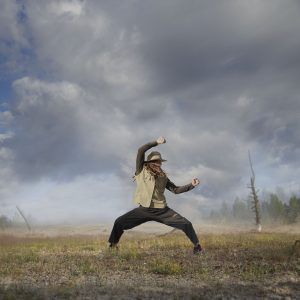
From November 17, Patricia Thornley’s work The Western, part of her series THIS IS US, is on view as part of the group exhibition “Empathy” at Smack Mellon Gallery in Brooklyn, New York. The project is the latest in a seven-year series of installation and single-channel video works consisting of interviews and performances. Previous videos of the series are An American in Bavaria (2011), Don’t Cry for Me (2013), and Sang Real (2015). As a whole, THIS IS US formulates multiple parallel inquiries into the collaborative fantasies Americans enact through popular media. In the current political climate, as the escalation of social and economic forces impacting millions of lives is cast into increasingly sharp relief, these fantasies take on new urgency and, in many cases, a new absurdity.
The Western’s cast of characters consists of these Civil War-era archetypes: Indian Scout, Beast of Burden, Frontiersman, Savage, Deserter, Justice, and Drifter. The work is conceived as a two-part installation in which the cinematic trope of the Western is used as a framework for inquiring into the American psyche. In the exhibition space, a projected “movie” is installed opposite a wall of screens playing a series of interviews with the seven participating characters.
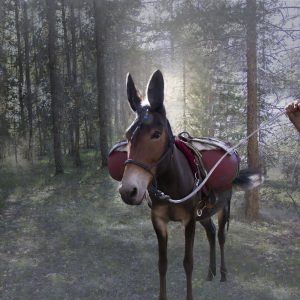
Andrea Scrima: Patricia, a few years ago I conducted an interview with you about a previous work of yours, Sang Real (2015), for the online poetry magazine Lute & Drum. Now, with The Western, the overall structure of THIS IS US is coming more and more clearly into focus. The last time we spoke at length about your series was a year and a half before the last presidential election. How have recent changes on the political landscape affected your approach to the themes in your work?
Patricia Thornley: From the beginning in the THIS IS US series, one of the questions I asked in my interviews with the people who featured in the individual videos was “how do you feel about being an American?” Historically, there’s always been a certain political disconnect at play with Americans, due to less armed conflict on our own soil and a certain comfort level.
I didn’t ask this question because I was trying to be instructive, but because one of the most important aspects of my work is to observe opposing and conflicting states of consciousness and to create situations that attempt a kind of uncommon reconciliation of these states. So in terms of what has changed I would say that what I was perceiving as a state of unconsciousness (pre-Trump) has been pushed to the surface by outrage and fear.
A.S.: Sang Real is a stark piece in which a lone man faces the rising tides of the Port Medway Harbour as waves wash over the domestic debris surrounding him. Notions of belonging, identity, and displacement collide with the stark realities of economic downturn and migration. Although the video was shot in Nova Scotia, within the context of the series it also speaks to the deteriorating economic situation in America, to the widening gap between rich and poor.
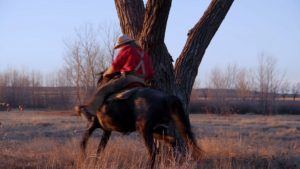
P.T.: In Sang Real, the metaphor of the rising tide occurs over the course of the piece. The tide is gradual and easy to ignore, despite the loss that it ensures. Again, this interests me in the ways that it reflects a state of awareness (or lack thereof)—one that could be seen as a result of fear, or perhaps as a kind of strength or practicality, a holding out. This formula plays out in The Western as well. In this project, I hold up archetypes that have persisted in our culture and examine how the vestiges of those identities are hard to shake, due to the freedoms and comforts they provide. They retain a certain normalcy and even style, or fashion, despite being anachronistic.
A.S.: The attributes that turned us into a superpower and then outlived their time, morphed into something else.
P.T.: I know I feel more heroic when I wear my cowboy boots.
A.S.: Ha!
P.T.: I want to see people as clearly as possible, and that means understanding what works for them. Life is hard, and we all adapt in unique ways. In The Western, the character who is cast as The Frontiersman could be seen as a simulation of a “movie cowboy,” but I would say that we are actually seeing what has become his true identity—meaning, his is a solid identity that he has built carefully over time. It is one based in his knowledge of U.S. history and one that he has found a lifestyle to support, as he is employed as an Interpretive Ranger playing a Fur Trapper in an historic fort in Colorado. So in terms of the “casting” in the piece, the distance between his “character” and role is the closest.
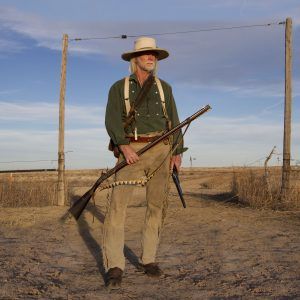
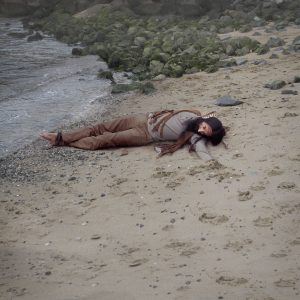
A.S.: And yet he is playing the fur trapper; he makes his living representing an identity that is fictional. All historical research and accuracy and all methodological authenticity notwithstanding, the modern idea of what an American fur trapper once was will be inevitably overlaid with notions about what this history means to us and what we choose not to know as we choose how we want to see ourselves today. Our identity as a country is contingent on this interpretation; the ways in which settlers, hunters, fur trappers et al. contributed to the so-called “Indian Removal” do not fit into the image we’ve constructed of the Wild West frontier, the founding myth at the heart of American identity.
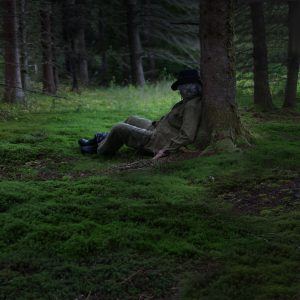
P.T.: How we choose to see ourselves is key. I’m especially interested in our capacity, or rather our inability to see, and how we then adapt our identities accordingly. In the interviews, I construct a picture of what has created my participant’s notions of order. This then leads to a broader acting out of the ways that we, as a culture, understand ourselves, through public ritual, iconic images, and music.
The Western was inspired by Bob’s proximity to his “character.” I saw a remarkable situation, and I wanted to build out from that, to create a fictional social landscape based on multiple archetypes of the western frontier. This is where I also become a character in the piece, a kind of straight man, if you will. As “director” I act out and take liberties, twisting the people around me into the roles of an affected imagination. This is seen most clearly in the Savage segment of the project, where I transform my South Asian friend Par into what I call an Indian Indian, and less dramatically perhaps, but equally intentionally, when I cast my friend Rachel as Deserter, because she chose to leave the United States to live in Canada.
A.S.: The Western treads an interesting line between using tropes from media representations of the Civil War Era, particularly movies, and probing the repertoire of characteristics generally acknowledged as being quintessentially American: assertiveness, individualism, pragmatism, self-reliance—and a crudeness that is now, in increasingly undisguised ways, coming to fore on the political stage.
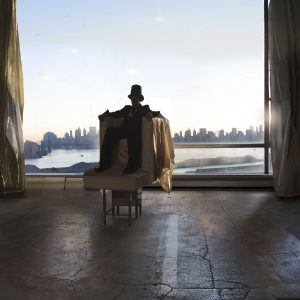
P.T.: Yes, I’m interested in how these behaviors are sustained and now even revived. It seems that people are being told that is who they are, after all. Many of us thought we were learning and making progress as a culture, but now the person holding the highest office in the nation talks about grabbing pussy. I do imagine it connects back to the kicking and spitting and grunting of the Wild West, or at least the media representations of that era that imply that aggressive force is the way to prosper.
A.S.: Throughout the course of the series THIS IS US, you’ve developed a sophisticated system of formal elements to explore the space between a person’s actual identity, the cultural myths he or she enacts, and the distance between the character played and the reality of the historical source. In your role as “director,” you not only use conversation and employ strangely cheap effects to break the surface illusion and indicate that another level of inquiry is taking place—you compose and perform music to accompany the videos, adding another complex layer of interpretation to the visual.
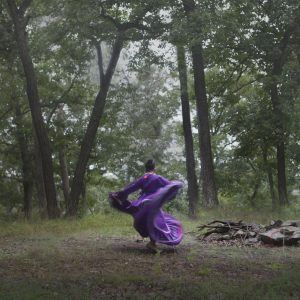
P.T.: Music is used in my work to create that juncture where clarity and rationality let go and give way to a certain disconnect. These are the moments that define the work, and I can’t stress this enough. I think that it’s impossible to sum up a person, and so in this kind of multi-layered portraiture I begin to approach what is for me an accurately complex representation, one that allows, especially through the musical elements, reverie. By singing in my work, I impose my presence in a way that I feel is also an accurate portrayal of the role of maker/director, the role that holds the cards, holds the power. Singing represents a physical embodiment of all of that for me.
A.S.: You’ve spoken about your interest in weakness—your work seems to explore the blind spots, the discrepancies, the fissures between our expectations and desires and who we really are.
P.T.: Yes, it’s very important to me to talk about weakness, and to reveal my own weakness and inability to see clearly. In the Drifter segment of the piece, when I interview Joanna, the ten-year-old Mexican-American girl whose family’s future is so uncertain, I touch on the role of interrogator more so than in the other interviews, in a nod to my own inability to imagine her experience. The exhibition at Smack Mellon is titled Empathy, and while my work does achieve this in places, it more often acts out the intense desire for, and difficulty of, true understanding. So I like to speak of blind spots, but when you can call something a blind spot then it’s not so blind anymore, is it.
A.S.: You’ve also spoken about the artificiality of false identity and employ a kind of awkwardness to call attention to the scene of enactment. At the same time, your casting seems to highlight conflicts between character and social / historical role as the available roles no longer reflect contemporary reality in all its complexities.
P.T.: You’ve touched on some important themes for me here. As I’m thinking about your question, I imagine a wonderfully odd parade, made up of all of us marching along, thinking we know what the parade’s about, wearing old costumes that don’t fit anymore and not remembering the swing step. This is a nice way to think about the “casting” in The Western. Some of the people only vaguely resemble their archetype, or in some cases, connect because they are antithetical to it. That represents the hold that these roles can have; for me, they also represent basic human desires and fears.
For example, the need for intel (Indian Scout), service (Beast of Burden), and protection (Frontiersman). And an acting out of dominance (Savage) and superiority (Deserter). Also a need to heroicize and elevate (Justice). And the fear of disruption, the fear of the Other (Drifter).
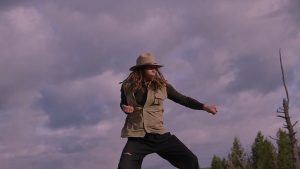
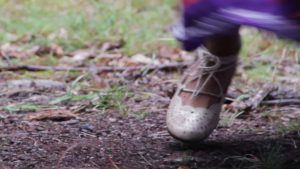
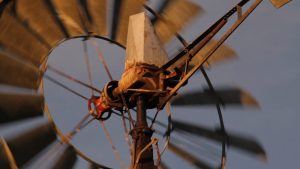
A.S.: America is an incredibly charismatic culture; for our generation born in the 1960s, for a significant period of time growing up, we were the envy of the world. But American anxiety is the other, far less acknowledged part of that history: we’re the inventors of the superhero, we expect miracles, and at the same time we struggle with the facts of who we really, historically, are. Your work seems to tap into the strategies the media employs to manipulate these anxieties and perpetuate these myths.
P.T.: Yes, I’m playing out the machinations of this part of our culture that thirsts for greatness, for heroes, for “winning.” I prefer not to reject, but to explore, what feels good in that. I think we learn more about ourselves this way. I’m offering something that I hope is more on the mark—is based less in fear, and more in clarity—that acknowledges the desires that play out on both sides of the American fantasy. See the confetti for the awkward gesture it is, and still enjoy it!
I chose each person in THIS IS US out of admiration, and I’m grateful for the trust they’ve shown in me and my work. We go through the motions of these conventions because there’s a core truth there, in the human impulse to portray, to record our lives, and to try to make the clearest picture we can. I hope that I’ve shown the real strength in them—in their resourcefulness, adaptation, generosity, and courage.
EMPATHY
Smack Mellon Gallery
92 Plymouth Street
Brooklyn, NY 11201
718-834-8761
Read the press release here.
Group exhibition curated by Gabriel de Guzman
November 17–December 30, 2018
Gallery hours: Wednesday—Sunday, 12–6pm
Opening Reception: November 17, 2018, 6–8 pm
Visit Patricia Thornley’s website here.
